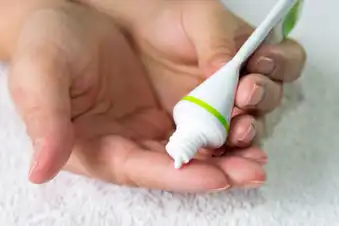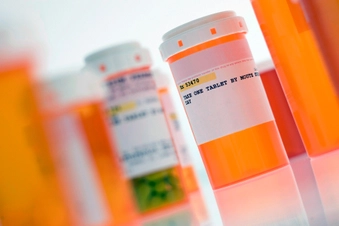Advocate for Your Best Treatment With GPP

Avoid Steroids
Steroid withdrawal is a common cause of a GPP flare. “A patient with existing psoriasis may go to their [primary care provider] or a walk-in clinic to treat a flare, and they are given topical or oral steroids,” said Rachel Day, MD, a dermatologist in Chambersburg, Pennsylvania. “When they taper off of them, their immune system goes into overdrive and they develop GPP.” She recommends that you ask for another, safer medication such as topical or oral retinoids.

Track Symptoms Between Visits
GPP doesn’t just affect your skin. “Fevers, arthritis, and fatigue are all symptoms of GPP,” said dermatologist Geeta Yadav, MD, founder of FACET Dermatology in Toronto. Ahead of your appointment, take note of how you've been feeling, even if you think it isn't related. “It can be helpful to track your flares, especially if you can identify patterns between any behaviors and your flare-ups,” she said.

Know Warning Signs
GPP can be life-threatening. It’s important to be aware of the signs, which include rapid expansion of pustules, as well as fevers, chills, or sweats, said Jeffrey Cohen, MD, a Yale School of Medicine dermatologist. These all indicate an emergency that requires treatment right away. If you can’t reach your doctor, go to the emergency room.

Get Your Primary Care Doctor Involved
Your dermatologist is a key part of your health care team, since they focus on your skin, said Day. But a GPP flare can affect other parts of your body, like your heart and kidneys. “Your primary care doctor will need to monitor other organs, to make sure they are still healthy, especially if you’ve just been hospitalized,” she explained.

Insist on a Skin Biopsy
It’s easy for GPP to get misdiagnosed, said Christopher Rex, MD, a dermatologist in Payson, Arizona. “The pustules may be mistaken for a bad acne breakout or a bacterial skin infection,” he explained. A delay in diagnosis and treatment is dangerous. Rex recommended that you ask your doctor to do a skin biopsy – a procedure where they remove a small amount of skin for lab testing – to know for sure.

Talk to Your Team About Lifestyle
“One of the most common triggers of GPP is stress, which causes inflammation throughout the body,” said Yadav. “To help reduce it, I suggest my patients start a yoga or meditation practice.” It’s also recommended to eat a healthy, balanced diet, get plenty of sleep, and drink lots of water to stay hydrated.

Double-Check Medications.
Yadav recommends that you sit down with both your dermatologist and your primary care doctor to go over your list of over-the-counter and prescription medications. Certain ones, such as beta-blockers and antidepressants, have been linked to GPP flares.

Know Some Keywords
If you have a GPP flare, call your doctor right away. But if you can’t reach them, you’ll need to go to the emergency room. It may be hard to explain GPP to medical professionals who aren’t familiar with it. Important keywords include:
- Sterile skin pustules
- Red, itchy, or painful skin
- Fever
- Fatigue
You should also talk to your doctors about a medical card that you can carry with you to explain your condition. You can find an example of one here.

Communicate Between Visits
Keep your health care team updated on how you’re doing, especially if a recent GPP flare left you hospitalized, Day stressed. “You want to document your skin as it heals,” she said. “During this time, you’re more vulnerable to skin infection. If you develop symptoms like pain and redness, let your dermatologist know.” Take pictures, and email them to your doctor’s office, or upload them to a patient portal like MyChart.

Ask your Doctor About Biologics
Biologics treat GPP because they target proteins called cytokines that ramp up inflammation in your body, Cohen said. “GPP tends to be harder to control than many other forms of psoriasis, so biologics are often the best option to effectively manage it,” he explained. One medication, spesolimab (Spevigo) is specifically FDA-approved to treat GPP. It’s given as an IV infusion in your doctor’s office, or as an at-home shot.
Show Sources
IMAGES PROVIDED BY:
- iStock/Getty Images
- E+/Getty Images
- iStock/Getty Images
- The Image Bank/Getty Images
- Life in View/Science Source
- E+/Getty Images
- Corbis/Getty Images
- iStock/Getty Images
- Cavan/Getty Images
- Connect Images/Getty Images
SOURCES:
Rachel Day, MD, dermatologist, Chambersburg, Pennsylvania; chief medical officer, Zest Dermatology.
Geeta Yadav, MD, founder, FACET Dermatology, Toronto.
Jeffrey Cohen, MD, dermatologist, Yale School of Medicine.
Christopher Rex, MD, dermatologist, Payson, Arizona; president, Peak Dermatology.
National Psoriasis Foundation, “Generalized Pustular Psoriasis.”
Rare Disease Advisor: “Generalized Pustular Psoriasis.”
National Organization for Rare Disorders: “Generalized Pustular Psoriasis.”
UpToDate: “Patient Education: Psoriasis (Beyond the Basics).”
American Academy of Dermatology: “Pustular Psoriasis.”